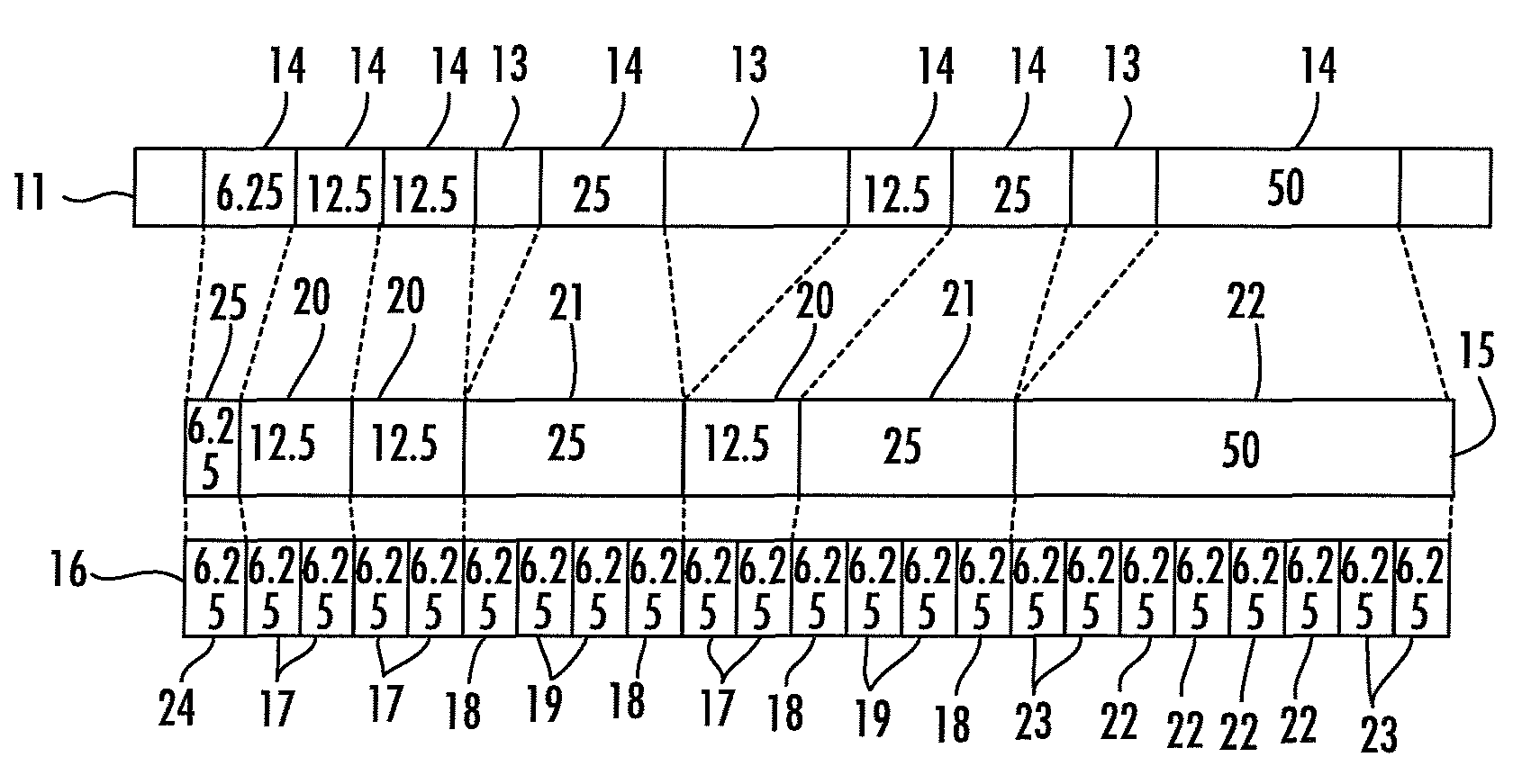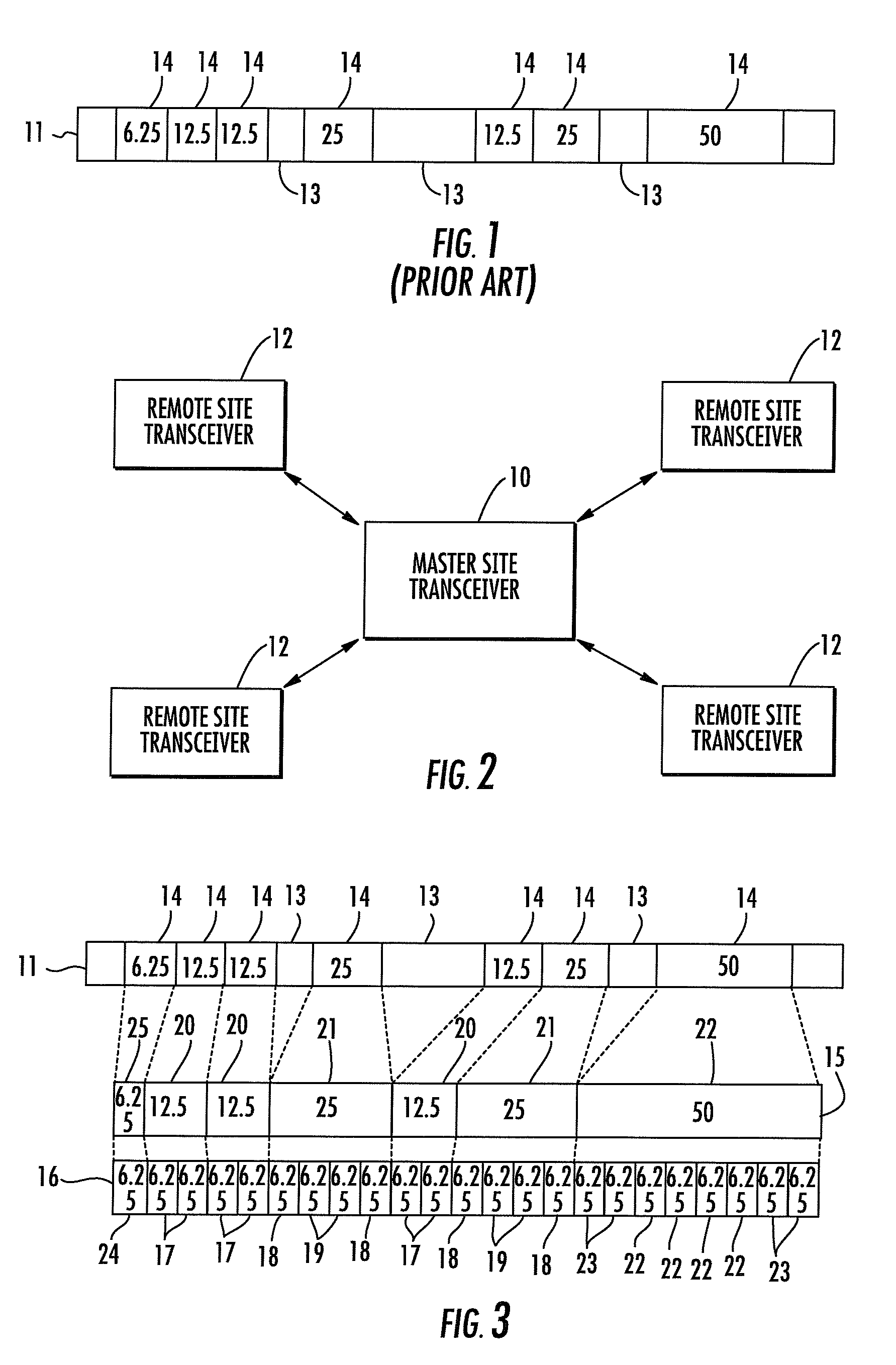Spectral reuse transceiver-based aggregation of disjoint, relatively narrow bandwidth (voice) channel segments of radio spectrum for wideband RF communication applications
a radio spectrum and voice channel technology, applied in the field of radio frequency (rf) communication spectrum usage methodology, can solve the problems of radio channel utilization, radio channelization of radios cannot be changed, and ninety-percent of available bandwidth is wasted
- Summary
- Abstract
- Description
- Claims
- Application Information
AI Technical Summary
Benefits of technology
Problems solved by technology
Method used
Image
Examples
Embodiment Construction
[0015]Before describing the details of the disjoint radio channel aggregation methodology of the present invention, it should be observed that the invention essentially involves enabling the spectral reuse transceiver disclosed in the above-referenced '753 application to perform additional functionality—that of effectively aggregating a plurality of disjoint, relatively narrowband (e.g., voice) RF channels into an overall totality of potentially available bandwidth, that is considerably wider than any individual licensed narrowband channel, and is able to accommodate relatively wideband applications, such as, but not limited to the transmission of data and / or video.
[0016]As will be described, this additional functionality is readily implemented by simply setting the configuration parameters that are used by the communications controller of the transceiver disclosed in the '753 application to control the operation of the transceiver. The architecture of the transceiver of the '753 ap...
PUM
 Login to View More
Login to View More Abstract
Description
Claims
Application Information
 Login to View More
Login to View More - R&D
- Intellectual Property
- Life Sciences
- Materials
- Tech Scout
- Unparalleled Data Quality
- Higher Quality Content
- 60% Fewer Hallucinations
Browse by: Latest US Patents, China's latest patents, Technical Efficacy Thesaurus, Application Domain, Technology Topic, Popular Technical Reports.
© 2025 PatSnap. All rights reserved.Legal|Privacy policy|Modern Slavery Act Transparency Statement|Sitemap|About US| Contact US: help@patsnap.com


